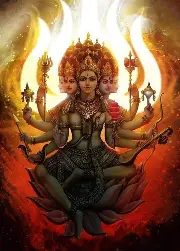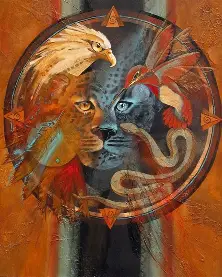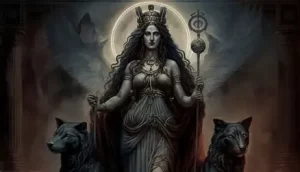My Journey Through Sanatana Dharma, the Dark Goddesses & the Shamanic Path:
My spiritual path has never followed a straight line. It is a weaving of multiple truths — a living tapestry of myth, ritual, devotion, and ancestral memory. In this intricate pattern, I have found home in the philosophies of Sanatana Dharma, the fierce embrace of the dark goddesses, and the elemental wisdom of the Q’ero shamanic lineage. What began as an attempt to integrate these seemingly distinct paths has revealed itself to be a profound journey toward wholeness — a reclamation of who I have always been.

My first encounter with Sanatana Dharma — the eternal way — was not a coincidence, but rather a longing and inner hunger for truth and answers. The Bhagavad Gita offered me a language for the inner war I had always known. Arjuna’s paralysis before battle and Krishna’s call to action mirrored the soul’s resistance to purpose and the sacred necessity of alignment with Dharma, right action beyond ego. This ancient dialogue gave structure to my values: surrender, discernment, and fearless truth. It is a  continuous reminder of the path we all are on, the pursuit of our Dharma, and the confrontations with our past or karmas.
continuous reminder of the path we all are on, the pursuit of our Dharma, and the confrontations with our past or karmas.
But the teachings of light only made full sense when I met the dark — not as evil or absence, but as womb, depth, and dissolution. The Shakti Purana opened the path to Kali, Dhumavati, and Bhairavi — the fierce forms of the divine feminine that do not comfort, but liberate. These goddesses shattered my illusions and taught me that destruction can be a blessing when it clears space for authenticity. Their fire burned away what no longer served, while their grounding revealed the beauty of cycles — of death, grief, and rebirth.
Alongside these rich lineages, I found myself drawn to the ancient shamanic wisdom of the Andes, specifically the teachings of the Q’ero — descendants of the Inka and keepers of a living Earth-honoring tradition. The archetypes of the shamanic mesa — the serpent, jaguar, hummingbird, and condor — became guardians and mirrors of a deeper journey happening within. 
The serpent taught me to shed my skin without shame, to release the past without story. The jaguar gave me the courage to walk through the jungle of my fears, holding boundaries with dignity. The hummingbird led me on the path of joy, trusting the sweetness of life even in unknown territories. And the condor, with its vast wings, opened my heart to vision — to seeing from the soul, beyond logic.
In this synthesis, I also encountered the whispers of Hekate, the Greek goddess of thresholds, magic, and the unseen. In the Greek Magical Papyri, she appears as guide and guardian — a torchbearer between worlds. Her presence affirmed that what I was doing was not a clash of traditions, but a sacred weaving. She reminded me that the crossroads are places of power — not confusion — and that to walk multiple paths is not fragmentation, but complexity honored.
 These traditions did not ask me to choose between them. They asked me to embody them. To see that Sanatana Dharma's discipline and surrender could live in harmony with the primal force of the goddesses and the Earth-rooted ritual of the Andes. Each offered me tools, stories, and languages to better understand the multiplicity within myself.
These traditions did not ask me to choose between them. They asked me to embody them. To see that Sanatana Dharma's discipline and surrender could live in harmony with the primal force of the goddesses and the Earth-rooted ritual of the Andes. Each offered me tools, stories, and languages to better understand the multiplicity within myself.
I no longer seek to make these lineages fit together. They already do. Like the threads of a braid, they strengthen each other — and me. My spirituality is not a fusion made for convenience, but a deep listening to what resonates with truth, reverence, and responsibility.
This is how I walk now: with Gita in my hand, the goddesses at my back, the mesa in my heart, and the stars at my feet. Not as someone trying to become something — but as someone remembering who she’s always been.
Hari Om Tat Sat 